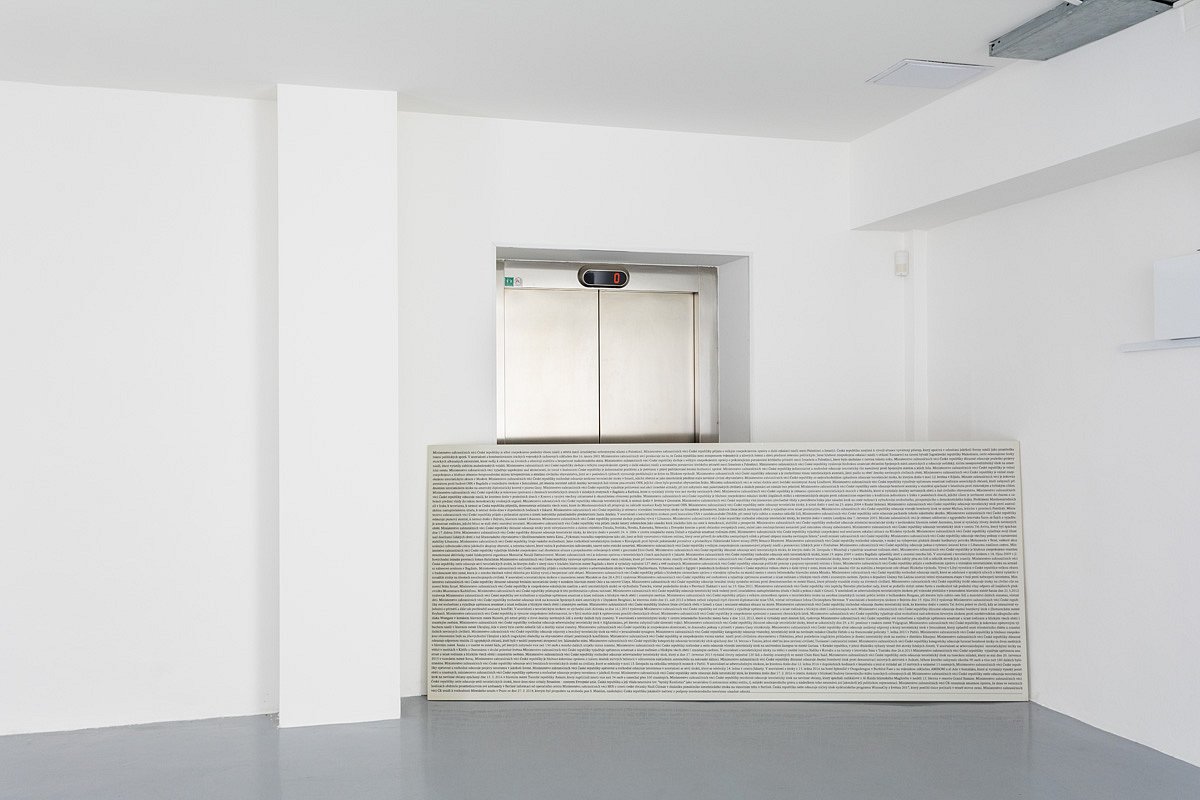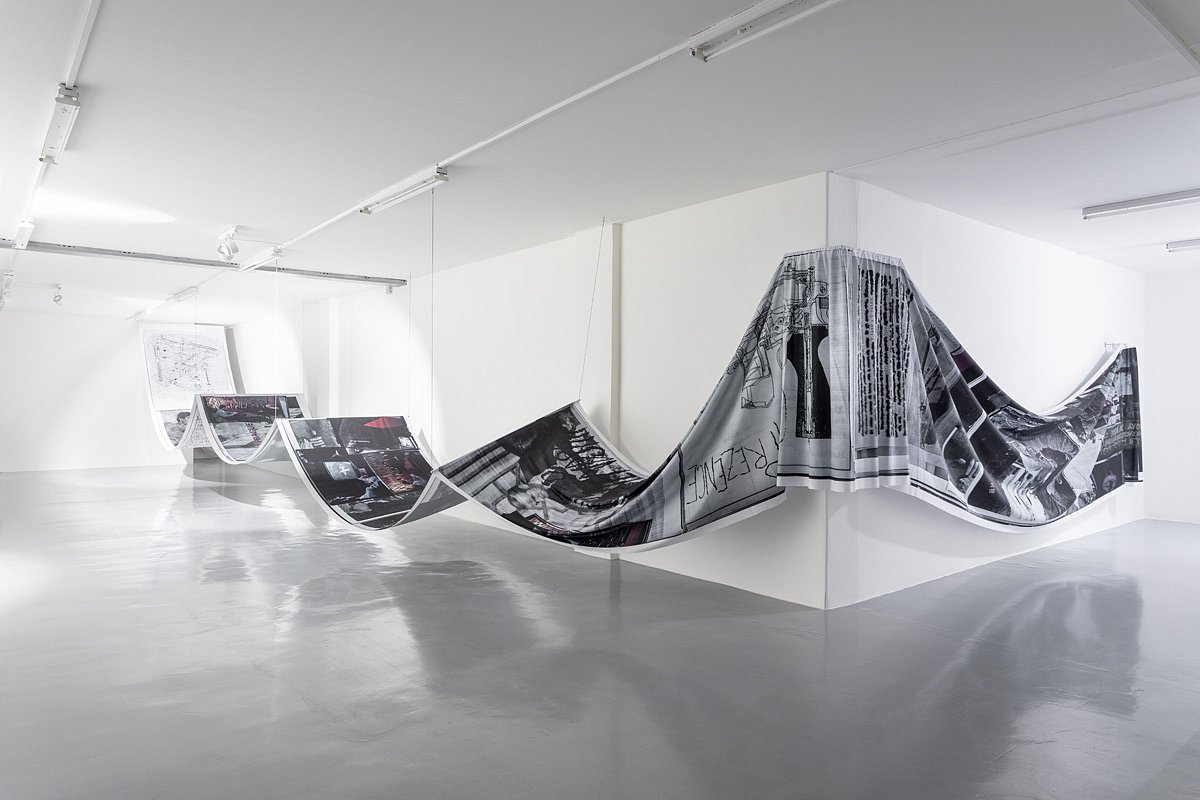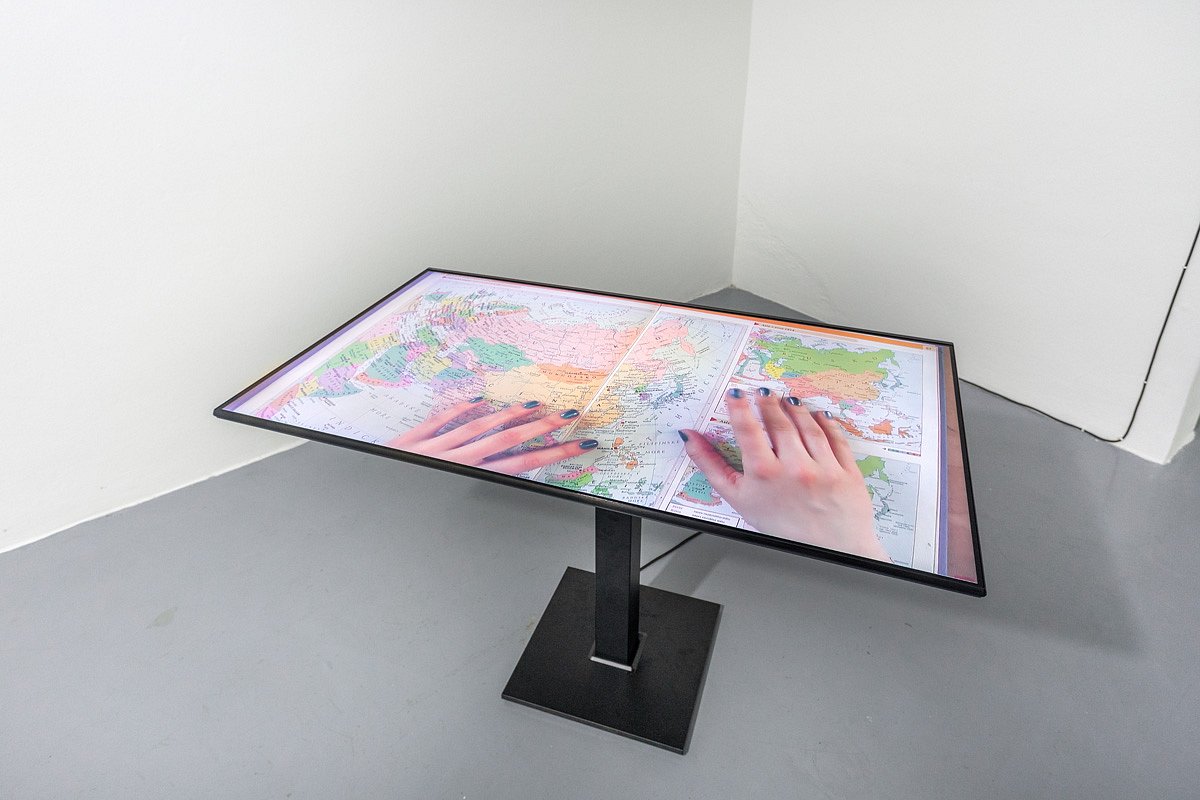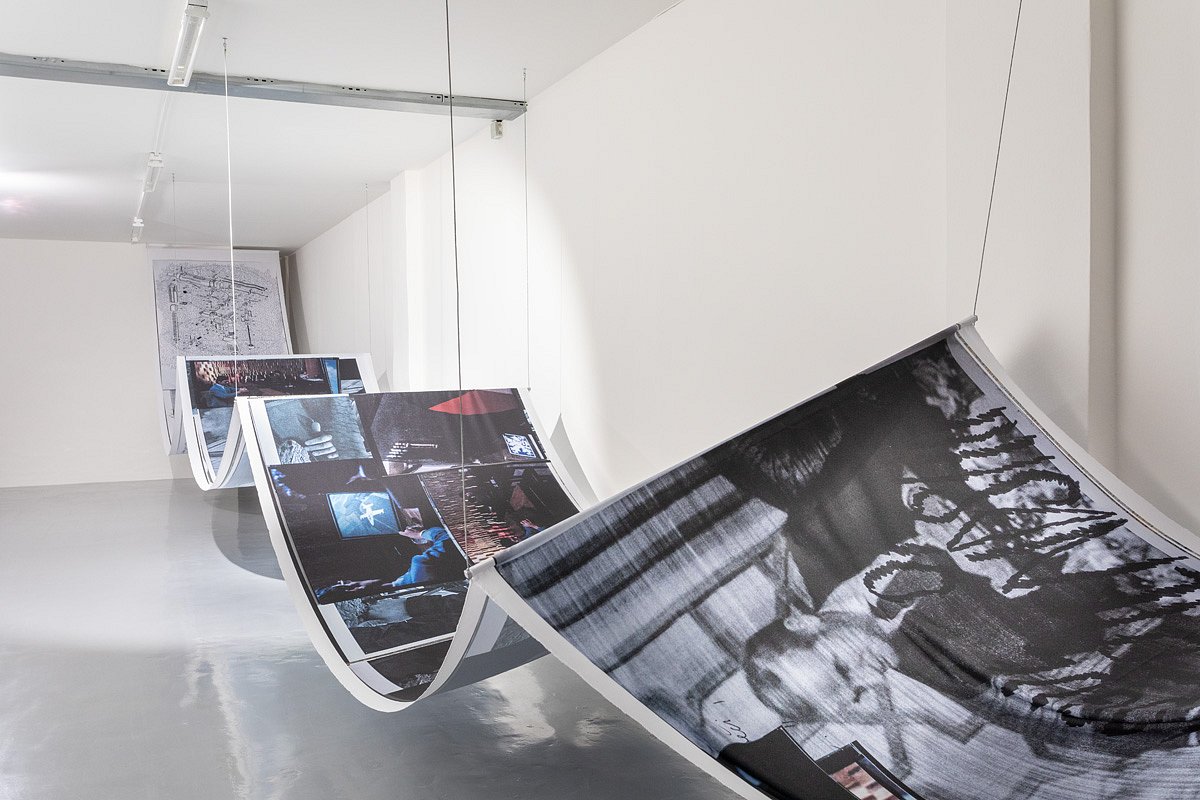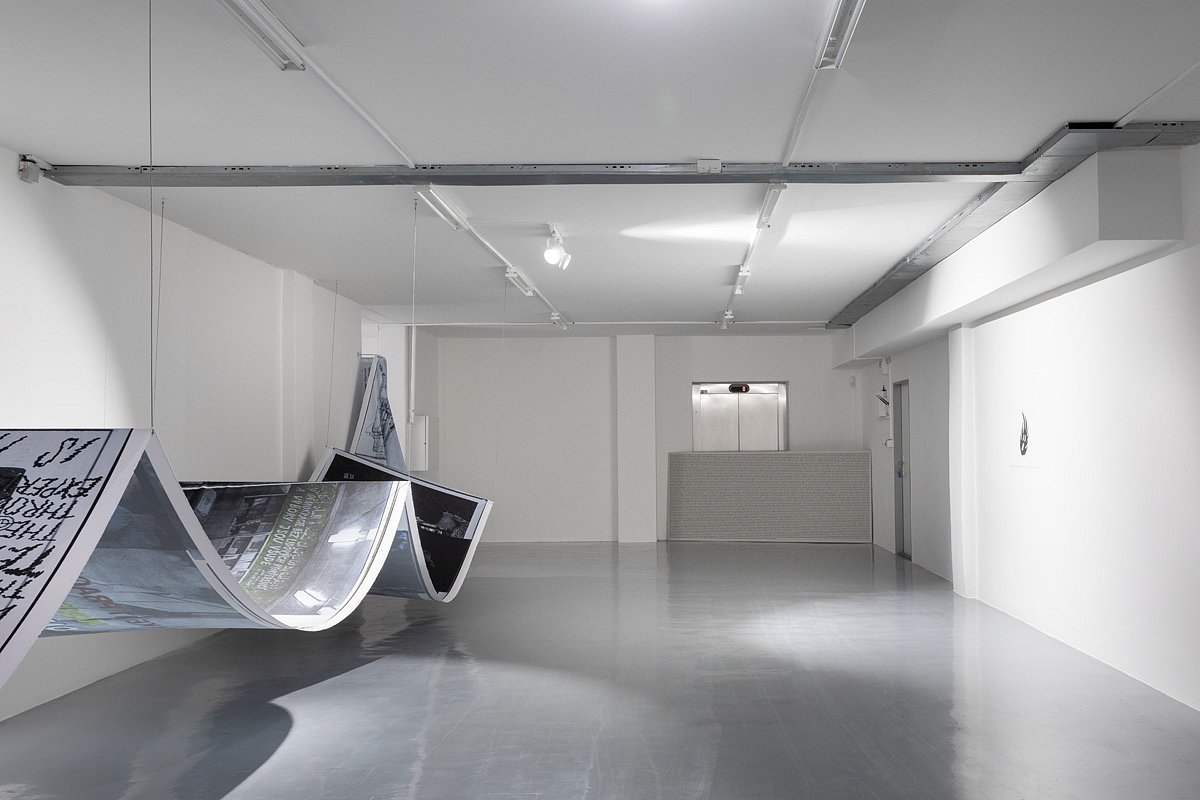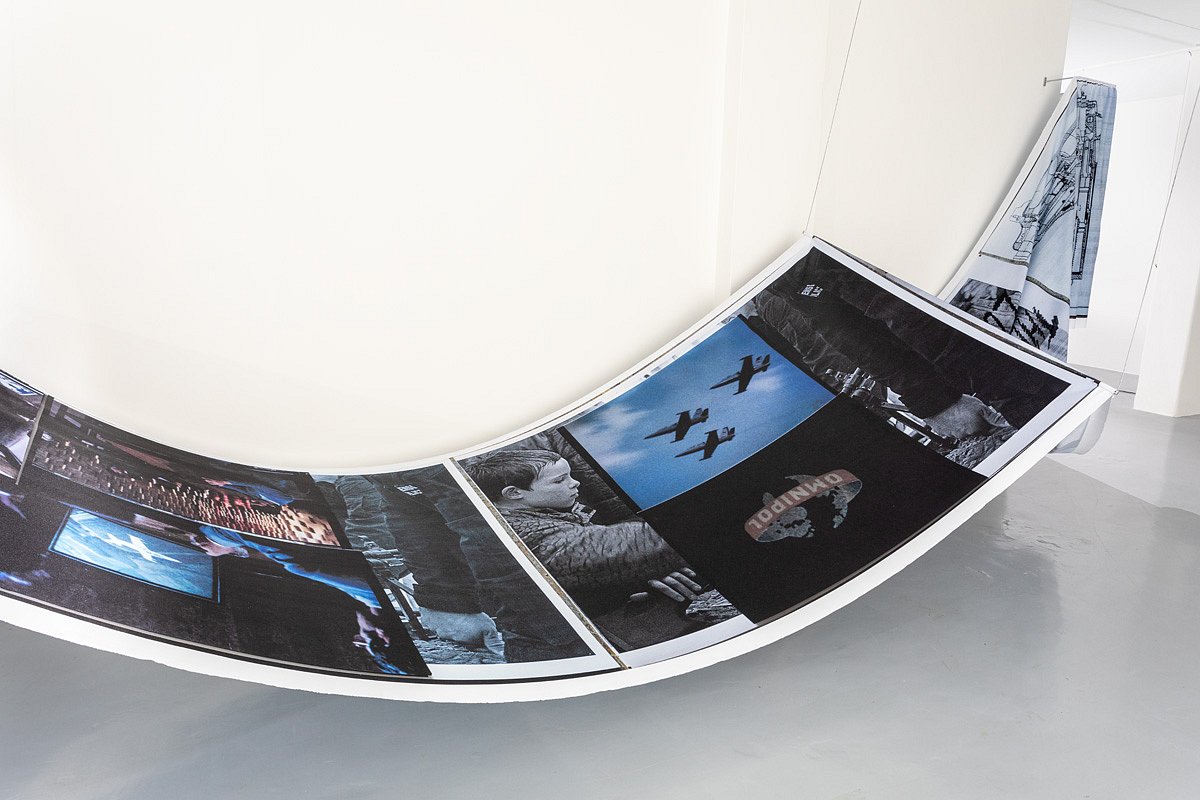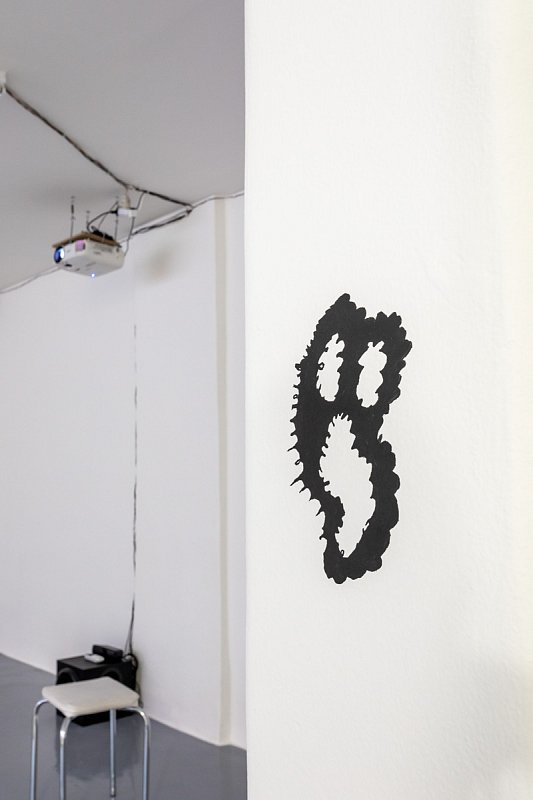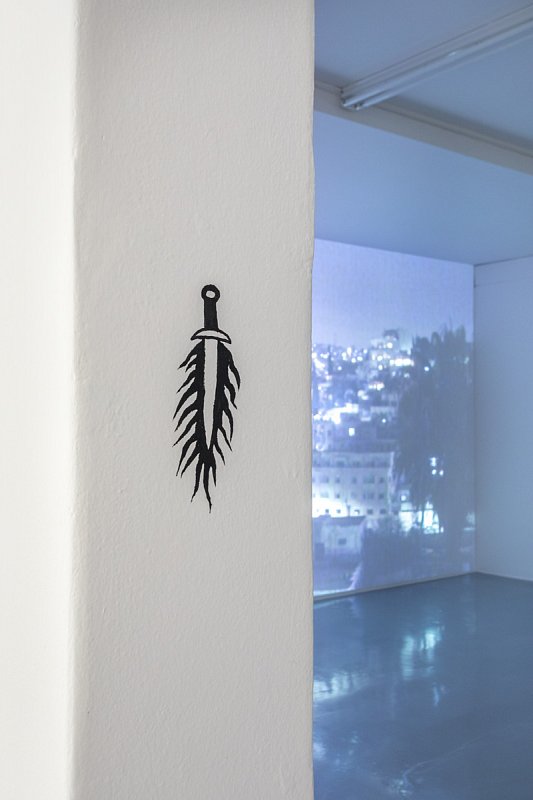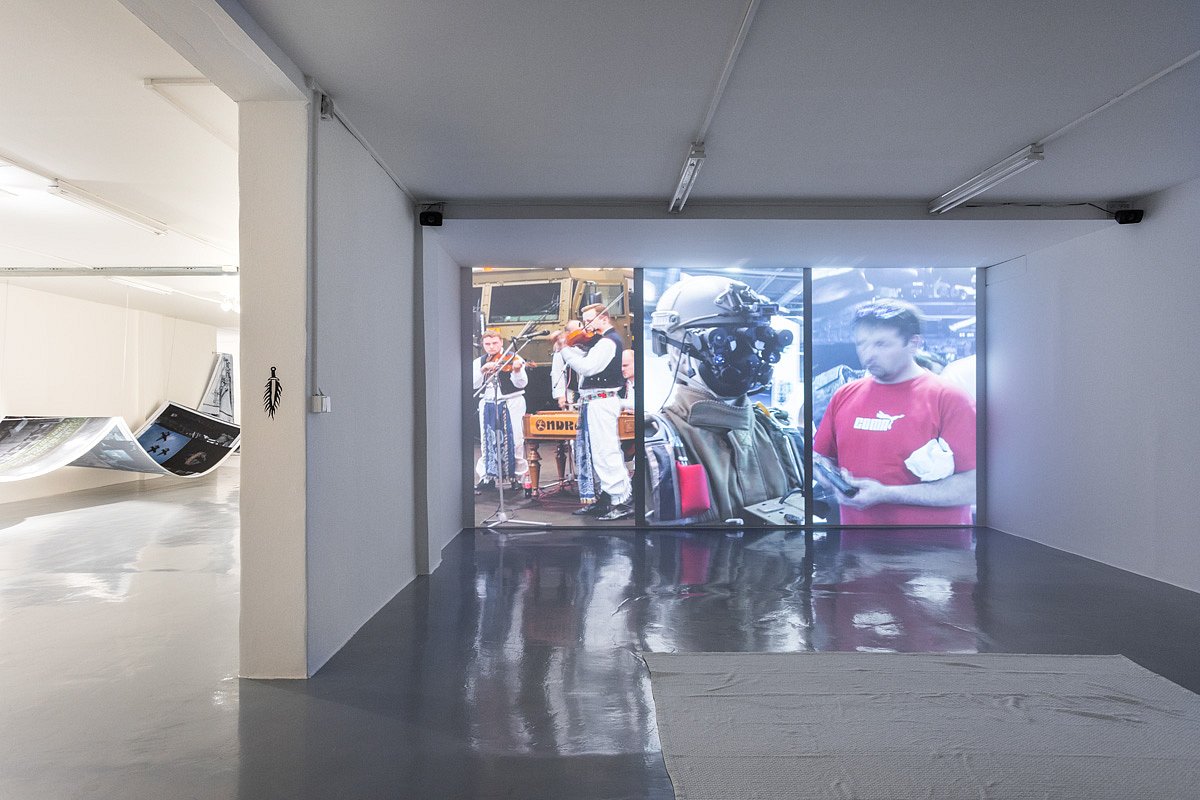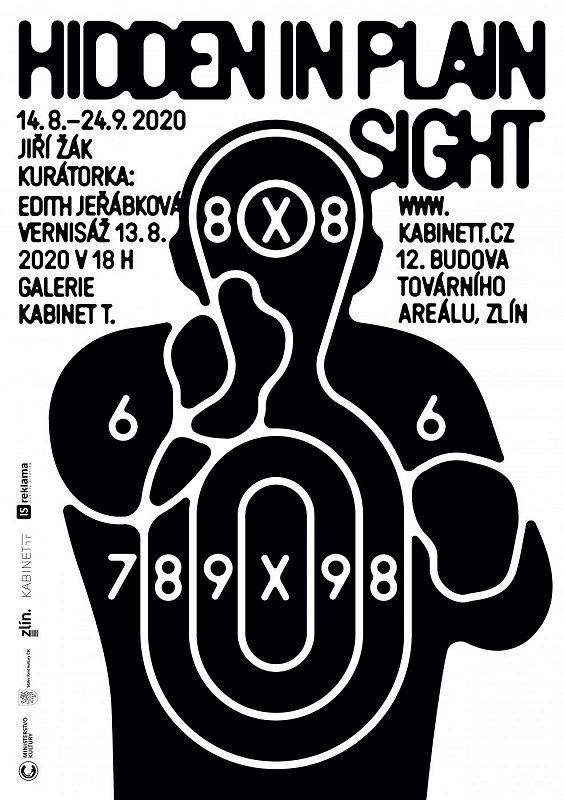Our history is full of events which emergence now seems predictable to such an extent that we ask why our ancestors let it happen. The thing that lies in front of us remains hidden from our sight. Respectively, it does not trespass into the realm where it would require our action. An individual's activities in relation to those of society merge into a complicated relationship. Such complications also peek through Žák's process of pointing out these relationships in our present times. It may be said that this issue stretches across Jiří Žák's artistic projects: from his first attempts to interpret family archives to the analysis of contemporary societal and political matters.
The arrangement of the installation and the style of individual artworks point towards the overarching theme of platitude. The platitude of contemporary political and commercial image, text, vision and perception causes a significant semantic and emotional decline. The technique of perspective differentiation of the world, which was still used as an image illusive propaganda in the Baroque period, is lost with modernism. Moreover, it is not just the case of the visual style, but also of the apparatus itself. While Jiří Žák, whose work resembles the process of artistic research, is working his way through the media images created during the collaboration between the Middle East and the Czechoslovak Socialist Republic, he accompanies the archival materials, both textual and visual, by doodles and notes. Their visual style is close to imagining transnational logos or the art of tattooing.
Moreover, these inconspicuous and treacherously likeable doodles accompanying Žák's research expose the artist's personal engagement with the studied materials. It is such works that the artist enlarged to be put on the gallery walls where, when perceived by the visitors' eyes, he shows how the media images encode, paradoxically, both anxiety and charm. Such anxiety and charm that we, as the consumers of these media images, treacherously adopt into our own lives. Additionally, Jiří Žák monumentalised his research material by shifting it to a collage attached to a strip of fabric which, as a result, wraps the gallery space in a variety of visual documents. The ubiquitous allusion to platitude underpins the simultaneous effects of archival and hallucinatory elements of the artist's work based on the quasi-investigative research of political and visual theories.
Politics and the change of perception in relation to the environment and the institution through which, significantly, information and visual mode are distributed, form Žák's general theme of exploration. His long-term interest lies in international relations, mainly the export of weaponry from Czechoslovakia to the Middle East. Jiří Žák tracks down the construction of Czech identity and foreign politics through reflecting upon the relationship between Czech populace and local arms industry; he is doing so through both contemporary and historical lens. We frequently have the impression that a small country like the Czech Republic, enclosed by countries of more significant nature, has only a minor influence on global and military matters. However, exposing our arms industry tradition means reconceptualising these views and our impression of the Czech Republic and Czechoslovakia's subdued politics. Jiří Žák quotes, for this situation, when we do not see what is obvious, the philosophical writings of Mark Fisher in which this schizophrenic situation finds an explanation through interpreting Freud's term of negative hallucination. Thus, even though Czechoslovakia was, during the 20th century, one of the arms industry giants and developed various weaponry types, such fact did not permeate into the construction of our identity. Žák's Epilogue of Long Friendship is a winding project of several methods and perspectives through which the issues mentioned above are perceived. Significantly, such issues which within the Czech contemporary artistic platform do not find sufficient recognition.
At first, Jiří Žák's method alludes to the post-conceptual critique of the '90s and '00s or the tendency towards archives connected to these years. However, his final artworks remind us that the pieces of information, although engulfed in the most interesting or the most logical systems, cannot alter or revise the state of things, our relations to habits and norms. Žák stops relying on logic and is not afraid of losing the amount of gained information favouring the emotional gravity, the language of the body, voice and movement, the effects of sound, the environment and things, and a dose of absurdity, inexplicability or poetic form. To combine political content with such a distinctive visual and textual artistic expression is to be playing with the borderline of what is tolerable and what is not. Nevertheless, it boosts the efficiency of his works. The artist does not aim to solve the issue by the typical scientific research method: pointing out the problem and reaching the explanation. Instead, Žák chooses to digress and diversify through visual and sound methods, institutional and virtual elaboration: video, video essay, large format collage, storytelling, audio essay, incantation, audio collage, gallery presentation, a YouTube channel, ASMR video etc.
Fans of sci-fi genres know the best that there are and can be many narratives and to pick one is to step in hegemonically into complicatedly intertwined relationships. Žák's method is mainly structural – he notices individual elements and contextual linkages while letting them dominate and be heard. Through the blending of these multiplied semantic plains, he creates a moving structure. Moreover, with this structure, the artist catches the viewer's eye, not letting even the minor detail escape the viewer's perception. Storytelling is a movement, and Žák unearths such fact by adding more movements: of a body, voice, sound, image, camera or a tongue...
Jiří Žák's very first project concerning the Czech arms industry was the production of the video Pilgrimage Through the Middle East and Africa from the AISMR series (Autonomous Infected Sensory Meridian Response) in 2016. It is now four years since this imitation of an authentic YouTube channel. More artists are now invited into his artistic research process and the capturing of the armourer's reality in the context of Czechoslovakian identity. Moreover, Žák introduced the complexity of our shared genetic information with the help of suspense reached through the ambivalent relation between documentary and journalistic expectations, retro aesthetics and personal artistic reaction. Such a reaction which with a dose of intuition makes the wannabe invisible war politics present, and through oscillating between storytelling and awakening presence, absurd moments are emerging. Significantly, Žák does not want to moralise. As he knows that it is impossible to force a viewer to relive history or invisible presence, he points us towards acknowledging our incapability to do so through the means of various grounding and emotional formats.
Nevertheless, Žák's work also employs highly simplistic formats. For example, note-taking of the first sentences of the Czech Ministry of Foreign Affairs' pronouncements throughout the last nineteen years. Such a project, The Czech Ministry of Foreign Affairs' Pronouncements (1999-2018), exposes the Kafkaesque nature and absurd image our foreign politics hold.
Furthermore, the exhibition Hidden in Plain Sight combines the artist's old works with new ones. The film Ammán (2020) shifts between the artist's footage from a personal residence in Jordan and footage produced by Žák's colleagues, Václav Drozd and Tomáš Hlaváček, during the International Defense and Security Technology Fair IDET in Brno. Instead of the expected camera movement to be of the quasi-documentary and touristic aesthetic capturing Ammán's diverse and exotic environment, Žák's camera remains static, fixed at one spot from which it gazes from a distance or zooms into the city life; the life unattainable from such a position. Reality and the author's subjectivity step in as the film gets to its second half when Žák turns the camera to capture his face. These shots are mixed up with the sequences showing the footage from the International Defense and Security Technology Fair IDET which content is a commentary in itself with a hint of a non-constructed national bias.
Conclusively, Jiří Žák is not up to showing the archives to the public and exposing the sources of his research. With the archives being fairly accessible, it is clear that the project's investigative side is not the primary goal of Žák's artworks. However, the artist acknowledges that it is the type of material a viewer seeks to perceive. The exhibition in Kabinet T. Gallery enables the viewer to see such material without necessarily yielding an educational ethos. The author combines artworks that process the investigations within the exhibition with those adding a more general viewpoint on our reception's formation. Additionally, this presentation touches upon the issue of configuring our foreign politics during the times of COVID-19 global pandemic which, significantly, bears similarities with the configurations which took place during the export of weaponry into the Middle Eastern realm.
